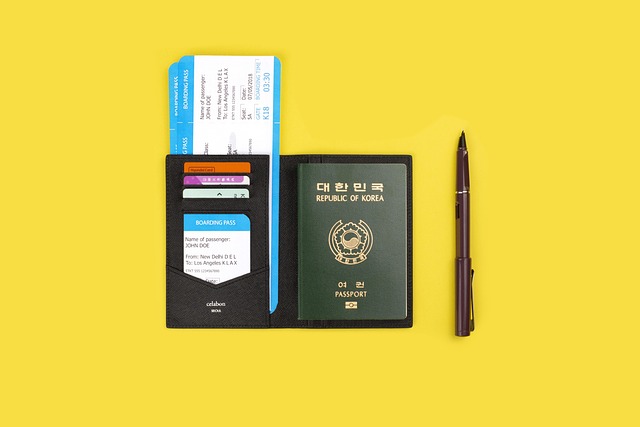Travel Credit Cards: Benefits, Types, and Considerations
Travel credit cards have become increasingly popular among frequent travelers and those seeking to maximize their rewards on everyday purchases. These specialized financial products offer a range of perks and benefits tailored to enhance the travel experience while providing opportunities to earn points or miles. This article explores the world of travel credit cards, their features, and important factors to consider when choosing one.

What are travel credit cards and how do they work?
Travel credit cards are financial products designed to offer rewards and benefits specifically tailored for travelers. These cards typically earn points or miles on purchases, which can be redeemed for travel-related expenses such as flights, hotel stays, or car rentals. The core mechanism involves earning rewards on everyday spending and travel purchases, which can then be used to offset future travel costs or enhance travel experiences through perks and benefits.
What types of travel credit cards are available?
There are several categories of travel credit cards, each catering to different needs and preferences:
-
Airline co-branded cards: These cards are partnered with specific airlines and offer rewards and perks tied to that particular carrier.
-
Hotel co-branded cards: Similar to airline cards, these are affiliated with hotel chains and provide benefits like free nights and status upgrades.
-
General travel rewards cards: These cards offer flexible points that can be used across multiple airlines, hotels, and travel providers.
-
Premium travel cards: High-end cards that offer luxury perks like airport lounge access and travel credits, often with higher annual fees.
What are the key benefits of travel credit cards?
Travel credit cards come with a variety of benefits that can enhance the travel experience and provide financial advantages:
-
Rewards on spending: Earn points or miles on purchases, often with bonus categories for travel and dining.
-
Sign-up bonuses: Many cards offer substantial welcome bonuses in the form of points or miles after meeting initial spending requirements.
-
Travel insurance: Some cards provide coverage for trip cancellations, lost luggage, or rental car insurance.
-
No foreign transaction fees: This feature can save money on international purchases.
-
Airport lounge access: Premium cards may offer entry to airport lounges worldwide.
-
Travel credits: Annual credits for travel-related expenses like airline incidentals or hotel stays.
How do travel credit card rewards programs work?
Travel credit card rewards programs operate on a point or mile-based system. Cardholders earn a certain number of points or miles for every dollar spent, with some categories offering higher earning rates. These rewards can typically be redeemed in several ways:
-
Booking travel directly through the card issuer’s portal
-
Transferring points to partner airlines or hotels
-
Statement credits for travel purchases
-
Cash back (though often at a lower value than travel redemptions)
| Card Type | Typical Rewards Structure | Common Redemption Options |
|---|---|---|
| Airline Co-Branded | 2-3x miles on airline purchases, 1x on other spending | Flights, seat upgrades, companion passes |
| Hotel Co-Branded | 3-6x points on hotel stays, 1-2x on other categories | Free nights, room upgrades, status boosts |
| General Travel | 2-5x points on travel and dining, 1x on other purchases | Travel bookings, point transfers, statement credits |
| Premium Travel | 3-10x points on select categories, travel credits | Luxury travel perks, high-value redemptions, concierge services |
Prices, rates, or cost estimates mentioned in this article are based on the latest available information but may change over time. Independent research is advised before making financial decisions.
What factors should be considered when choosing a travel credit card?
Selecting the right travel credit card requires careful consideration of several factors:
-
Annual fee: Weigh the cost against the potential value of rewards and benefits.
-
Rewards structure: Ensure the earning categories align with your spending habits.
-
Redemption options: Look for flexibility in how you can use your points or miles.
-
Travel habits: Consider whether you prefer a specific airline or hotel chain or value flexibility.
-
Foreign transaction fees: Essential for international travelers to avoid extra charges.
-
Additional perks: Evaluate extras like travel insurance, lounge access, or elite status benefits.
-
Sign-up bonus: Compare initial offerings, but consider long-term value as well.
How can travelers maximize the benefits of their travel credit cards?
To get the most value from a travel credit card, consider these strategies:
-
Use the card for all eligible purchases to maximize point earnings.
-
Take advantage of bonus categories and special promotions.
-
Plan redemptions strategically, looking for high-value opportunities.
-
Utilize travel benefits like lounge access and travel credits.
-
Pay the balance in full each month to avoid interest charges that can negate rewards value.
-
Combine cards strategically to cover different earning categories and benefits.
Travel credit cards can be powerful tools for enhancing travel experiences and saving money on trips. By understanding the types of cards available, their benefits, and how to maximize rewards, travelers can make informed decisions about which cards best suit their needs. As with any financial product, it’s crucial to read the terms and conditions carefully and consider personal financial circumstances before applying for a travel credit card.






